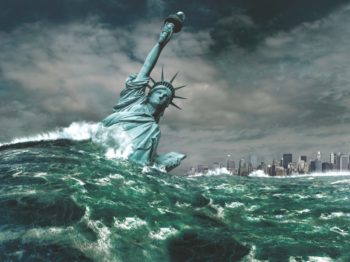 Once again, the Obama administration has stealthily released its spring regulatory agenda, which includes the costliest regulation in history, as millions of Americans hit the road to celebrate Memorial Day weekend.
Once again, the Obama administration has stealthily released its spring regulatory agenda, which includes the costliest regulation in history, as millions of Americans hit the road to celebrate Memorial Day weekend.
Obama’s Spring 2015 Unified Agenda and Regulatory Plan has more than 2,300 regulations in various stages of planning and lays out the administration’s regulatory plans for the coming months. The White House, however, has developed a reputation for releasing their regulatory agendas on the eve of major holidays when many Americans are in the midst of travelling.
The White House released its Fall 2014 Unified Agenda the day before Thanksgiving, and Obama’s Spring 2014 agenda was released the Friday before Memorial Day weekend — both days involve millions of people travelling across the country and paying little attention to political news.
While this spring’s regulatory agenda has fewer regulations than the agenda from last fall, this year’s regulatory plan includes what could be the costliest regulation in U.S. history: the EPA’s proposed national ozone standard.
The agency is proposing lowering the national ambient ozone standard from 75 parts per billion to between 65 and 70 parts per billion. EPA says the lower standard will prevent from 320,000 to 960,000 asthma attacks per year, along with “preventing more than 750 to 4,300 premature deaths; 1,400 to 4,300 asthma-related emergency room visits; and 65,000 to 180,000 missed workdays.”
“Bringing ozone pollution standards in line with the latest science will clean up our air, improve access to crucial air quality information, and protect those most at-risk. It empowers the American people with updated air quality information to protect our loved ones — because whether we work or play outdoors — we deserve to know the air we breathe is safe,” EPA Administrator Gina McCarthy said in a statement when the rule was released last year.
Republicans and industry groups have opposed the EPA’s ground-level ozone standard and put forth data showing this rule could end up being the costliest regulation in U.S. history. A report by the National Association of Manufacturers says the ozone rule could cost $140 billion per year. That’s $1.7 trillion between 2017 and 2040.
Why would the ozone rule cost so much? The EPA sets ozone levels for the country and states are responsible for developing plans to meet whatever standard is set by the agency. Critics of the rule argue that the new ozone standards would be so low, it would be impossible for huge swaths of the country to be in compliance.
For instance, research has shown EPA’s proposed ozone standard is so strict that about 100 state and national parks would not be forced out of compliance. Hardly centers of industry, parks like Yellowstone and the Grand Canyon would not comply with the EPA’s proposal, according to research by the center-right American Action Forum.
The most recent salvo against the EPA’s rule has been an ad campaign by the American Petroleum Institute (API), urging the federal government not to change the current ozone standard.
















